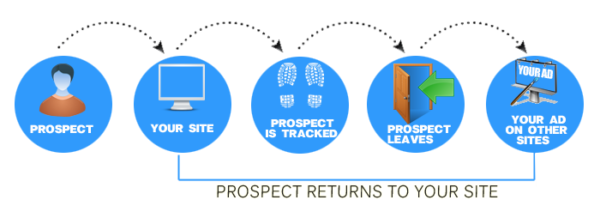You should really look into the latest course on Remarketing with Google Adwords and Analytics to pick up some practitioner tips which I taught for Linkedin/Lynda. Below is a discussion I’d like to elaborate on for now:
When we work with a large account, an increase of 2% in conversion rates can be as much as $80K per month in additional turnover. However there are also situations where small businesses struggle with remarketing – especially when the need to meet Google’s “1000 list” rule, where the list size has requires at least 1000 visitors. Eagerness to meet the list size often results in a wider campaign focus, which is precisely why conversion rates do not improve – resulting in losses to the business.
Simply put: A business with 100K visitors per month may have a segment of around 5000 users who are more likely to convert as a result of remarketing. However a business with 10K visitors per month, with a segment of 600 visitors who could convert better due to remarketing will not meet the requirement, fiddle with it’s target settings to meet the 1000 mark – and it will be a miss.
Therefore, rule no.1 for remarketing success is that you run a business with sufficient traffic in order to really zoom in with the right targeting criteria.
Most of my clients work with us because we’re quite upfront about the bottom line: Sales conversions. It’s impossible to hide behind “brand metrics” and other things that looks awesome on a dashboard, but does not increase the ammount of sales conversions. The only exception to this is when I help media clients such as online newspapers to build their audience – since these folks don’t actually buy something, but rather consume free information.
What is the rationale for higher conversions and ROI with Google remarketing?
Google loves to make you think that they are on top of their game with segmentation and retargeting, whereas in actual fact they are quite limited in terms of understanding your customer segments deeply. However when we understand the flow of users across a website, it becomes reasonably possible to “segment” some of our users with accuracy, based on behavioural data. The case for higher conversions through Google remarketing is as follows:
- Cart abandonment: We’ve actually seen cases where remarketing can stalk consumers around the web if they back out of a deal. Yes, this can bump up conversions, but you should keep your bids low to make sure that ROI is reasonable too. I like this tactic where the client is obsessed with market share, more than ROI, else we avoid stalking cart abandoners.
- Behavioural targeting: We generally know what a buyer looks like and what sort of pages they visit. When we set up rules in a particular way, we basically dump all the users who do not meet certain behavioural criteria (Provided that we have enough visitors on the site to meet the list size criteria). Again, Google tells you how awesome their features are to guarantee a good ROI if you use the right targeting criteria – but do you have the right volume of traffice to roll with this tactic?
- Brand building: Shopping comparison engines can send visitors to at least 15 different websites and Google does the same. So how can we get those visitors to remember us? This is where remarketing can be useful – unless you’re in a market with very little competition.
Right now I’m working on a Google remarketing course that will be available on the Microsoft/Lynda/Linkedin platform. I promise that this will be one of the more advanced courses out there – and it will really help you think proactively about how to use remarketing successfully in your business.
What next?
Get expert help with your digital marketing, remarketing and various strategic.

